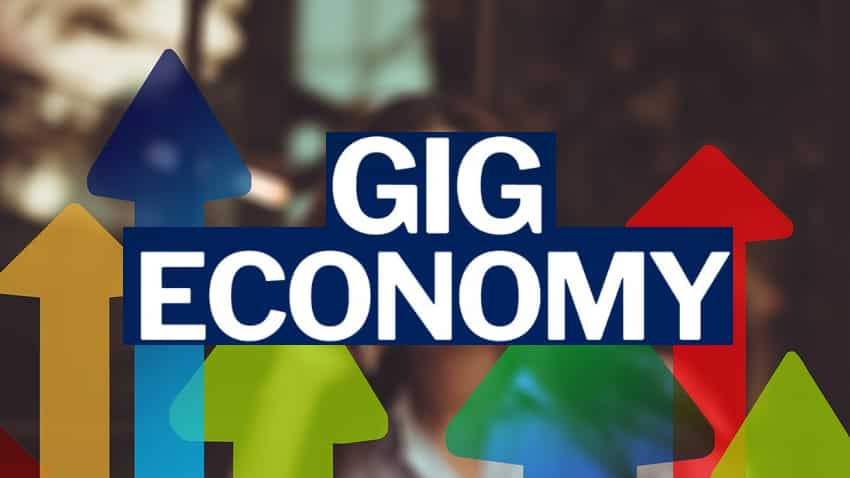JAKARTA, cssmayo.com – Gig Economy: The Rise of Flexible Workforces is honestly shaking things up, and yeah, I’ve been living in it for the last five years. At first, I thought being a freelancer would be a walk in the park—roll out of bed, laptop on the couch, coffee in hand. Boy, was I wrong! There’s way more hustle here than I ever expected, but the reward? Wild. Total freedom for how, when, and where I work.
The Gig Economy has emerged as one of the most disruptive forces in today’s labor market. Fueled by digital platforms, shifting workforce expectations, and global connectivity, the Gig Economy is redefining employment relationships—offering flexibility and autonomy on one hand, and new challenges around security and benefits on the other. Here’s a closer look at what the gig economy is, why it’s growing so fast, its real-world impacts, and where it’s headed next.
1. What Is the Gig Economy?

At its core, the Gig Economy refers to a labor market characterized by short-term contracts or freelance work instead of permanent jobs. Key features include:
- Project-based engagements rather than long-term employer/employee relationships
- Digital platforms (e.g., Uber, Upwork, DoorDash) that match supply with demand
- Independent contractors who set their own schedules and rates
- Pay-per-task or per-hour compensation instead of fixed salaries
This model contrasts sharply with traditional 9-to-5 roles and appeals to workers seeking autonomy, supplemental income, or career variety.
2. Drivers Behind the Gig Economy Boom
Several factors have accelerated the rise of the Gig Economy:
- Digital Platforms & Marketplaces: Mobile apps and online portals make it easy to find, book, and pay for services in real time.
- Desire for Flexibility: Professionals value the freedom to choose tasks, work hours, and clients.
- Economic Uncertainty: Companies facing cyclical demand prefer variable labor costs over full-time headcount.
- Skill Specialization: Businesses tap into niche expertise on a project basis without hiring full-time specialists.
- Global Connectivity: Remote collaboration tools allow gig workers to serve clients around the world.
3. Transformative Impacts on Workers and Businesses
3.1 For Workers
- Pros
- Control over work schedule and location
- Opportunity to diversify income streams
- Rapid skill development across projects
- Cons
- Income volatility and lack of guaranteed hours
- Limited or no access to benefits (healthcare, retirement plans)
- Increased responsibility for taxes, insurance, and business expenses
3.2 For Businesses
- Pros
- Scalability: ramp up or down quickly based on demand
- Access to a global talent pool
- Cost savings on benefits and office infrastructure
- Cons
- Potential quality and continuity issues without long-term commitment
- Compliance complexities across jurisdictions
- Risks related to IP ownership and data security
4. Challenges and Considerations
As the Gig Economy matures, several challenges demand attention:
- Worker Protections & Classification
Defining who qualifies as an employee versus an independent contractor remains a hotly debated legal issue. - Benefits & Social Safety Nets
How do we ensure access to healthcare, retirement savings, and paid leave for gig workers? - Platform Accountability
What responsibilities do platforms hold for disputes, quality control, and algorithmic transparency? - Income Inequality
The highest-earning gig workers may thrive, while others risk exploitation and precarity.
Addressing these requires collaboration between policymakers, platforms, worker groups, and traditional employers.
5. Strategies for Success in the Gig Economy
For Gig Workers
- Build a Strong Personal Brand
Maintain a professional profile, gather client testimonials, and showcase your portfolio. - Diversify Your Client Base
Avoid overreliance on a single platform or customer to mitigate income risks. - Invest in Continuous Learning
Up-skill regularly to stay competitive in a rapidly evolving market. - Plan for Benefits
Research portable health plans, retirement accounts, and emergency savings.
For Businesses
- Establish Clear Contracts
Define scope, deliverables, IP ownership, and dispute-resolution mechanisms upfront. - Foster Community & Belonging
Provide network events or online forums to keep gig talent engaged and loyal. - Leverage Data Ethically
Use performance metrics to improve matching without compromising privacy. - Blend Workforce Models
Create hybrid teams combining full-time staff with specialized gig talent for agility.
6. Future Trends in the Gig Economy
- Platform Evolution: Niche marketplaces will emerge for specialized skills—legal, healthcare, STEM, etc.
- Portable Benefits: Bundled services designed to travel with workers across gigs.
- AI & Automation: Routine tasks will be automated, pushing gig workers toward more creative or strategic roles.
- Regulatory Frameworks: Governments will experiment with universal basic income, gig-specific labor laws, and digital IDs.
- Community-Driven Cooperatives: Worker-owned platforms that share profits and governance more equitably.
Conclusion
The Gig Economy is reshaping how we define work, compensation, and professional identity. For many, it offers unprecedented freedom and entrepreneurial opportunity; for others, it raises critical questions about security and fairness. By understanding its drivers, impacts, and emerging trends—and by proactively adapting policies and strategies—workers and businesses alike can thrive in this new era of flexible, on-demand labor.
Elevate Your Competence: Uncover Our Insights on Techno
Read Our Most Recent Article About Online Marketing: Promoting Products in the Digital Space !




